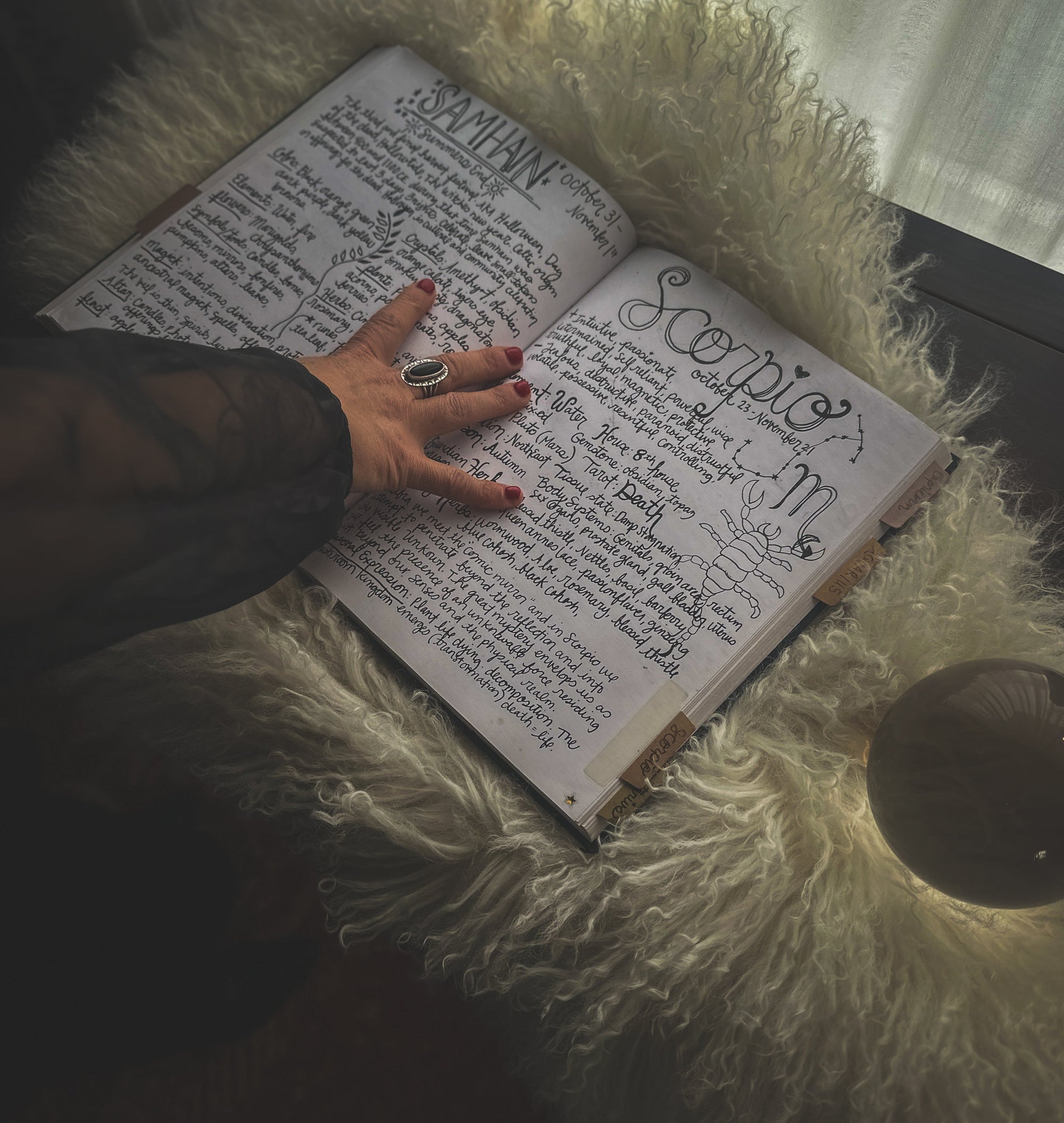Tea leaf reading, or Tasseomancy, is a time-honored form of divination that invites anyone with a cup of tea and an open heart to explore its mysteries. Rooted in centuries of tradition, this practice weaves together storytelling, intuition, and symbolism. While it has been traced back to the 17th-century tea trade routes, its essence aligns deeply with Pisces season. A time of heightened intuition and imagination.
Before tea became widely used for divination, seers relied on molten wax, lead, and even oil patterns to receive messages. By the Victorian era, tea leaf reading had become a beloved parlor practice, often paired with séances and spiritual gatherings. This natural evolution of divination reflects the Piscean energy of merging the mystical with the mundane, allowing the everyday act of drinking tea to become a portal to the subconscious.
More than a tool for fortune-telling, tea leaf reading invites you into a practice of self-reflection. It turns an ordinary cup of tea into a gateway for insight, unveiling hidden messages of the soul and the unseen currents shaping your path. As the Sun journeys through Pisces, a season of dreams, dissolving boundaries, and intuitive downloads, tea leaf reading can become an even more potent ritual for tapping into deeper wisdom.
What You’ll Need
-
A Teacup: A light-colored, bowl-shaped cup works best for visibility.
-
A Saucer: Helpful for catching any excess tea.
-
Loose Leaf Tea: Opt for teas with larger leaves, such as English Breakfast, Earl Grey, honeybush, or rooibos. Herbal blends with chamomile, lavender, or blue lotus align beautifully with Pisces energy.
-
Boiling Water
-
Napkin or Cloth
-
An Open Mind and Heart
For a more Piscean approach, consider using teas that enhance intuition and dreamwork. Blue lotus, mugwort, and jasmine are wonderful allies, helping to open the third eye and enhance dream recall. Infusing your tea ritual with lunar or planetary correspondences can also deepen your practice.
The Ritual
Pisces energy invites slowness, surrender, and a deep dive into the liminal spaces between waking and dreaming. Approach your tea reading ritual as a moment of quiet communion with yourself.
-
Ground and Set Your Intention – As your water heats, take a few moments to breathe deeply, feeling the connection between your body and the present moment. Set an intention for your reading: Do you seek guidance on a creative project, insight into a relationship, or clarity on an emotional undercurrent?
-
Infuse Your Tea with Energy: As you scoop a teaspoon of loose leaf tea into your cup, hold your hands over it and visualize the energy of your question or intention swirling into the leaves. If you work with deities, spirit guides, or ancestors, invite their presence.
-
Sip with Mindfulness: Drink your tea slowly, allowing it to become a meditation. Notice any thoughts, sensations, or emotions that arise. Sip and strain the leaves with your teeth as you drink. Pisces season encourages soft focus and receptivity, let yourself drift into the in-between spaces of knowing.
-
Swirl and Invert: Leave a small amount of liquid at the bottom, just enough for the leaves to move. Swirl the cup three times in one direction and then gently turn it over onto the saucer. Let the remaining liquid drain before turning it back up. This act can symbolize surrendering your question to the universe, trusting that the answers will come.

Reading the Leaves
Pisces, as the sign of dreams and symbolism, encourages an intuitive rather than rigid approach to reading the leaves. Rather than looking for literal shapes, allow images, emotions, and impressions to arise organically.
-
Soft Focus & First Impressions: Before actively searching for symbols, take a breath and simply observe. What catches your attention first? What emotion does it bring up? The first impression is often the most powerful. Don't doubt yourself!
-
Symbolism & Intuition: You might see familiar symbols: animals, numbers, celestial bodies, letters. A crescent moon could suggest a new beginning, while a bridge might signify a transition. Trust what arises without overanalyzing.
-
Journaling Your Readings: Keeping a record of your readings allows you to notice patterns over time. Reflecting back later can reveal deeper insights you may not have noticed at first.
Enhancing Your Ritual with Pisces Energy
Pisces, a water sign, ruling over mist, fog, and steam, the liminal spaces where form dissolves, and intuition takes the lead. As you prepare your tea, take a moment to observe the steam rising from your cup. Let it swirl and shift, revealing hidden messages in its delicate dance. This is the essence of Pisces, the magic found in what is ephemeral, fleeting, and in-between. Here are some other ways to connect to Pisces energy through tea leaf reading.
-
Moon Magick: Perform your tea leaf readings under a full moon, especially a Pisces or water-sign moon, for enhanced intuition.
-
Dream Tea Readings: Drink your tea before bed, then read the leaves in the morning to reflect on any dreams you had.
-
Altar Work: Create a small tea altar with crystals (amethyst, moonstone, or aquamarine), candles, and a journal to amplify the energy.
-
Music & Ambiance: Play ethereal music or ocean sounds to deepen the dreamy, Piscean atmosphere.

Final Thoughts
Pisces reminds us that magick is not about certainty, it is about wonder. Tea leaf reading, like any intuitive practice, is not meant to deliver fixed answers but to invite curiosity, self-reflection, and a sense of connection to something greater. Whether you receive a message that is clear or simply a feeling of comfort, trust that the ritual itself is the answer.
Happy Pisces Season!
May your tea be warm, your visions be vivid, and your heart be open.
Other Tips:
-
Avoid adding cream, as it can obscure the leaves.
-
Dark or translucent cups make patterns harder to see.
-
Some readers also interpret the leaves on the saucer for additional messages.
-
Try the Pisces Tea blend or Lucid Dreams Tea from Club Magic Hour
If you like this content, then you will love Coven of the Enchanted. Our online Patreon community overflowing with seasonal rituals, witchy crafts, folklore, and more.



